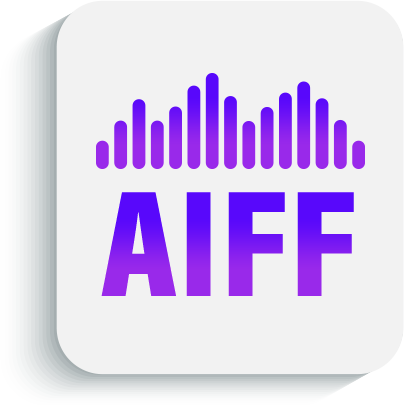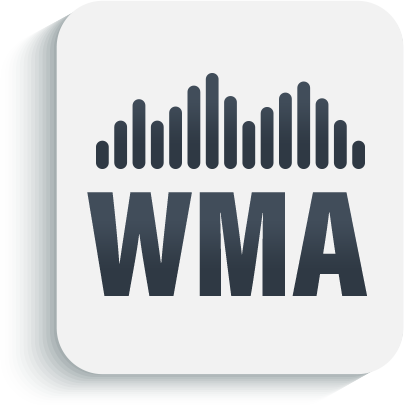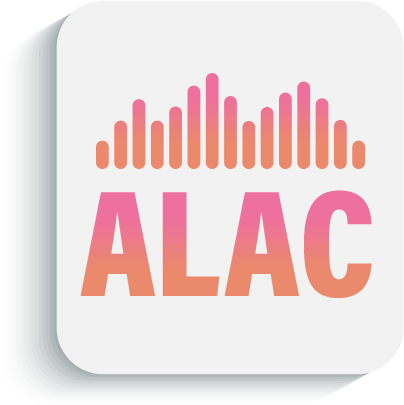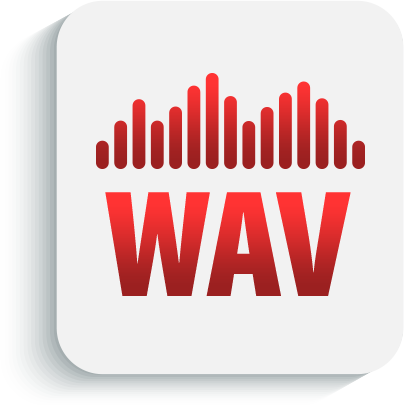Audiophile Glossary: File Types
Dive into our audiophile glossary on audio file types! We’re covering formats from lossless FLAC and ALAC to lossy MP3 and AAC, even touching on high-resolution formats like DSD. Understanding these will enhance your digital music experience. Join us as we navigate through the vast terrain of digital music!

A

In addition to its use in professional settings, AIFF is also commonly used in Hi-Fi systems because it allows users to enjoy high-quality audio without any loss in fidelity. This is particularly important for audiophiles who demand the best possible sound quality from their audio equipment. AIFF files can be played on various devices, from computers to smartphones to high-end audio systems, making it a flexible and versatile choice for audio enthusiasts.
B
Bitrate, also known as data rate, refers to the amount of data that is transmitted or processed in a given amount of time. This measurement is commonly used in digital audio files, where it determines the quality of the sound that is produced. Generally, the higher the bitrate, the better the audio quality, as more data is available to accurately represent the sound. However, higher bitrates also result in larger file sizes, which can concern individuals with limited storage space. It is important to carefully consider the bitrate when creating or selecting audio files to achieve the desired balance between quality and file size.
D
A high-resolution audio format with pulse-density modulation to encode audio signals. DSD has a much higher sampling rate than other digital audio formats that use pulse-code modulation, resulting in a more accurate representation of the original analog waveform. DSD files are typically larger than other formats but offer a more detailed and natural sound with less distortion and noise.
F
A type of audio file format that compresses audio data without losing any quality. This contrasts with other audio file formats, such as MP3 or AAC, which use "lossy" compression and discard some audio information to achieve a smaller file size. FLAC files are ideal for those who want the highest possible quality audio and are willing to trade off a larger file size for this. Audiophiles, music producers, and others who require high-quality audio often use them.

L
Lossless files are digital audio files that preserve the most detail of the original audio recording, providing the highest quality sound possible. They are compressed to allow smaller file sizes than uncompressed audio files without sacrificing audio data. Lossless audio files are considered to be the best option for audiophiles and music enthusiasts who want to experience the highest quality sound possible. They are also becoming more widely available, with some streaming services, such as Apple Music, now offering lossless file options to their users. Music fans can enjoy their favorite songs and albums with unparalleled clarity and fidelity by choosing lossless files, bringing them closer to the original studio recordings.
It is true that lossy audio files are smaller and more easily shared; it is worth noting that they sacrifice some level of audio quality. This can be particularly noticeable in certain musical genres, such as classical or jazz, where nuances in tone and instrumentation can be lost in the compression process. Additionally, it is important to consider the long-term effects of using lossy files, as they may not hold up well over time and may need to be replaced or converted to a different format.
M
An alliance of working groups, including the International Organization for Standardization and the International Electrotechnical Commission, that sets standards for media coding, transmission, and file formats, including compression coding for video, audio, and other media formats.
One of the most famous audio files is MP3, which revolutionized how we listen to music. MP3 files, also known as MPEG audio, layer 3 files, are designed for quick and easy sharing, allowing users to download and store music on their devices. Although MP3 files are lossy and may not have the highest quality sound, they make up for it with their incredible compactness, versatility, and compatibility with almost every audio device, from smartphones to music players. MP3 files can be played on various software and hardware platforms, making them popular among music lovers worldwide. MP3 files can be easily processed and edited using various software tools, making it possible to customize the audio to suit individual preferences. Overall, MP3 files have significantly impacted the music industry and made it possible for people to enjoy their favorite songs wherever they go.

MP4 files are video and/or audio files, meaning they can handle both. Beyond that, the quality is said to be better than an MP3 file. They are a digital multimedia container format that stores video and audio files. The Moving Picture Experts Group developed it, one of the most widely used file formats for digital audio and video. Compared to the popular MP3 file format, MP4 files offer better quality for both video and audio. This is because MP4 files use advanced compression techniques that allow for more efficient multimedia content storage. Additionally, MP4 files can also support a wide range of multimedia features such as subtitles, chapter markers, and metadata. The MP4 file format is highly versatile and can be used for various purposes, including streaming, downloading, and storing multimedia content.

W
A lossless audio compression technology developed by Microsoft. Unlike lossy compression formats like MP3, which discard some of the audio data during compression, lossless compression formats like WMA preserve all of the original audio data. This results in a larger file size than lossy formats, but the audio quality is identical to the original source. WMA Lossless is not as widely supported as other lossless formats like FLAC, but it can be played on Windows Media Player and other Microsoft devices.





